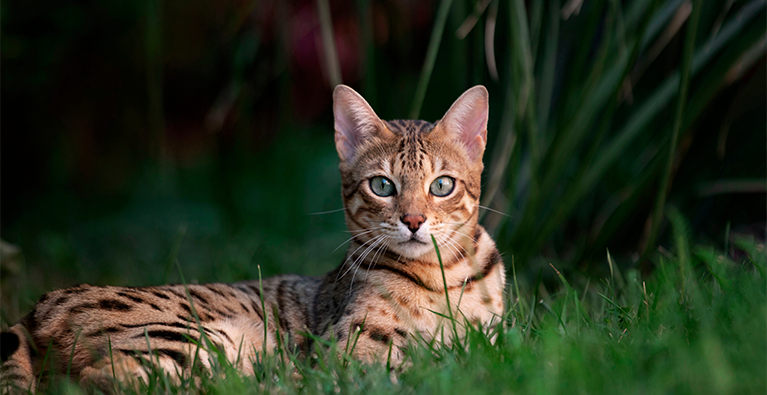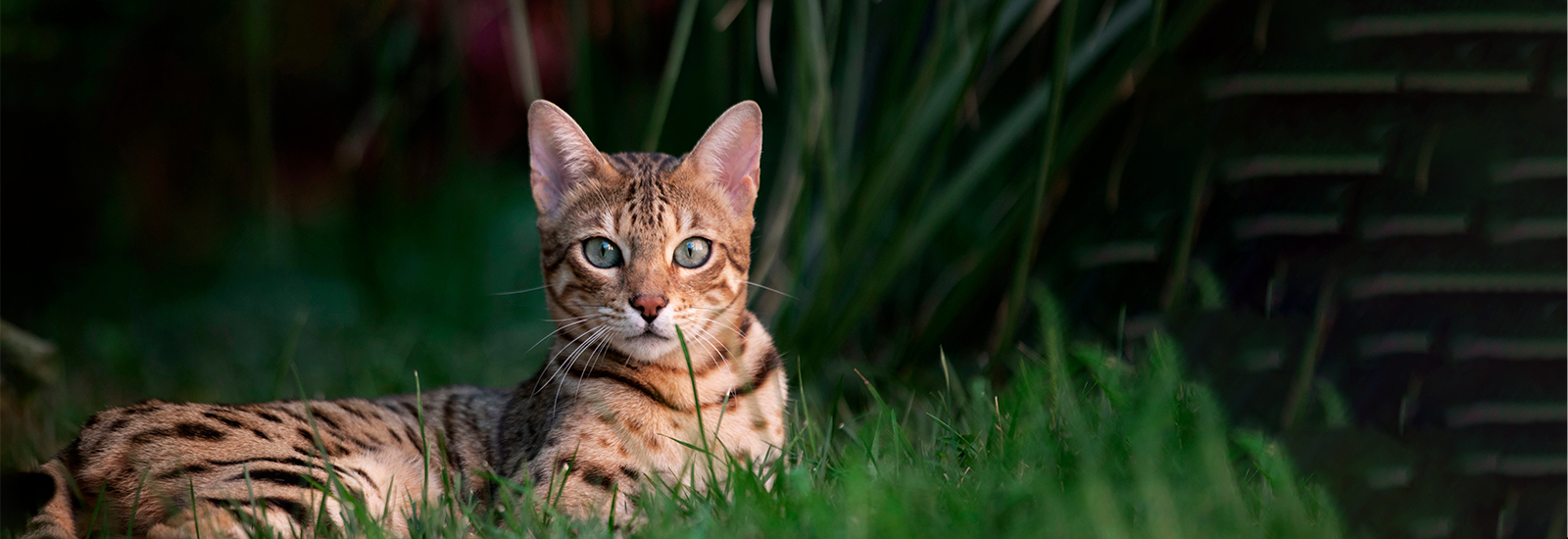Bengal cat
Not only does the Bengal cat resemble a wild cat, it is also descended from one. However, as a result of breeding with domestic shorthairs and tame pedigree cats, a very trusting and playful breed has emerged.
Profile of the Bengal cat
- Size medium
- Weight female: approx. 3.5 kg, male: approx. 6 kg
- Origin USA
- Build muscular, sleek
- Length of fur short
- Colour of fur shades of brown with spots
- Grooming minimal
- Behaviour agile, playful
- Character communicative, trusting
Appearance and character of Bengal cats
The Bengal is without doubt one of the most striking breeds of cat. There are only very few breeds that have a spotted coat that resembles that of a wild cat. One of these is the Bengal cat. Just like their wild relatives, every individual cat of the domesticated species is different from the next. At first glance, you could be forgiven for thinking that they all look the same. On closer examination, however, it becomes apparent that the basic colouring is not simply the same shade of brown, but can have variations in shades of yellow, orange and gold. Each one has its own individual marking. This can consist of either randomly distributed spots or marble patterns. Vertical stripes that may resemble the markings on a tiger’s fur do not, however, meet the breed standard.
The body of the Bengal cat is just as sleek as that of its wild ancestors. It is elongated, strong and muscular. The hind legs are slightly longer than the front legs and allow high jumping. The cat has quite a small head with a large nose and relatively large eyes. These may be green, gold, brown or blue in colour.
The nature of the Bengal cat perfectly reflects the mixture of domestic and wild cat. It likes being active and running through its home, it loves playing chase and climbing up its cat tree at lightning speed, and it knows how to show you what it wants. It is also a real chatterbox and very inquisitive, observant and trusting. When a Bengal cat is in the mood, it enjoys close physical contact and lots of stroking. However, depending on how much primal wildness it has retained, it may not always be suitable as a typical affectionate family cat.
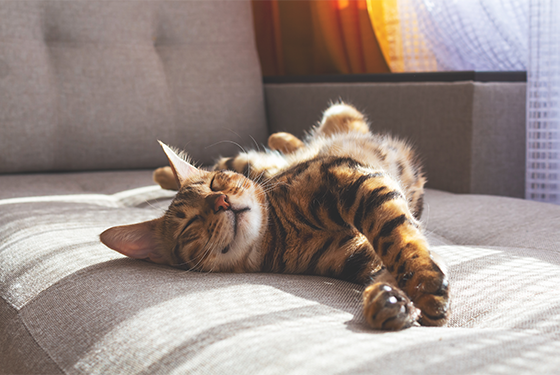
Keeping and caring for a Bengal cat
Bengal cats love to let off steam. For this reason, they need plenty of space. This does not necessarily mean that they have to live in a house with a garden, however they will not be happy in a tiny flat with limited mobility. They love a spacious territory where they can roam around. A cat-proof balcony or garden would be welcome, and the Bengal cat will also be happy to live in a home that offers lots of variety. The most important thing is that it does not get bored in the cat household. You can make sure of this by simply having two cats. Especially when it comes to playing chase, a fellow cat is far preferable to us two-legged companions. Despite this, we are also regarded as very welcome playmates. Playing with a cat fishing rod is a popular activity and most Bengal cats also enjoy having other toys. In addition, we should cater for their love of climbing and provide a cat tree that reaches up to the ceiling. They will adore this and it will often become the centre of their lives.
If you are not keen on grooming a cat, then the Bengal is just right for you. This breed of cat basically does it on its own. It will, however, do no harm to brush your pet every now and then, especially if it is allowed outside. Here, it could pick up parasites, but these are relatively easy to detect in the cat’s short coat. As a result, grooming is uncomplicated and quickly done, which is why Bengal cats see it more as a form of stroking and are happy to put up with it.
Nutrition
Whether it’s a kitten, an adult cat or a senior – the food for a Bengal cat should always be of high quality and tailored to its age. Cats are carnivores by nature, so cat food should always contain a high proportion of meaty ingredients. Sugar, flavour enhancers and artificial colourings and preservatives do not belong in the food.
animonda has the ideal food for every stage of your cat’s life. You can choose between kitten, adult and senior cat food. The products are specially formulated to meet the specific nutritional requirements of the different life stages of cats. This provides the best foundation for your pet to enjoy a long and healthy life.
Bengal cat: health
Bengal cats are not a naturally occurring breed of cat, but are specially bred. There will always be a slight risk of them developing hereditary diseases due to inbreeding, but this is only rarely the case with the Bengal. It is essentially a robust breed with an average life expectancy of 12 to 15 years – however the following diseases do occur, and reputable breeders will want to avoid these wherever possible with the help of genetic testing.
- Hypertrophic cardiomyopathy (HCM)
This is the most common heart disorder in cats. It causes a thickening of the heart muscle, which leads to a reduction in the size of the heart chamber. This causes congestion in the heart and water retention in the lungs. As a result, the cat quickly become out of breath, pants and is not in the mood for any long games. The condition can be detected by means of an echocardiography (cardiac ultrasound). Any affected pets should be excluded from breeding.
- Progressive retinal atrophy (PRA)
This eye disease causes the retina to slowly degenerate, culminating in blindness. Sadly, PRA cannot be cured, but it can take several years before a cat first becomes night-blind and then loses its sight completely. This does not necessarily mean that its life is no longer worth living. Most cats will continue to cope quite well in their familiar environment with only minor restrictions.
- Polycystic kidney disease (PKD)
This condition causes cysts to form in the kidney tissue, which in the final stages lead to kidney failure. Symptoms in cats include increased thirst and frequent urination. Although the negative effects of the cysts can be minimised with medication, there is sadly no cure
History and breeding
This breed of cat owes its origins to the geneticist Jean Mill. She had already been working on cross-breeding animals for several years when, in 1963, she decided to mate an Asian leopard cat with her black male domestic shorthair. This proved successful and produced, among other things, a spotted female. She later mated this cat with its father which resulted in a whole litter of spotted kittens. Sadly, most of them were infertile and the breeding programme was slow. When Jean Mill’s husband died, she put the project on ice for a while. However, in the 1970s, a colleague helped her out by providing some female hybrids, enabling her to resume her efforts.
This time, she also crossed other breeds of cat such as Abyssinian, Burmese, American short-haired cats and Egyptian Mau in order to overcome the problem of infertility. She was successful and finally managed to introduce the Bengal as a pure breed. In 1983, she was able to present her specially created cat breed to the world. People were fascinated and were eager to own a Bengal. The enormous interest has continued to this day. The Bengal is now one of the top 10 most popular breeds of cat. It was only officially recognised by the European umbrella organisation FIFe in 1999, making it a fairly modern cat breed.
The breed standard stipulates that although a Bengal should look “wild”, it should also be a lovable, affectionate cat. As far as the coat colouring is concerned, numerous variations are allowed, but there are nevertheless some exclusion criteria. For example, the tip of the tail must always be dark, the paw pads must all be the same colour, the animals must not be overly petite and the tummy must always be spotted. If you are offered a cat with one of these “faults”, it is by no means a bad thing, but this particular cat would not be authorised for breeding.
You may also like this
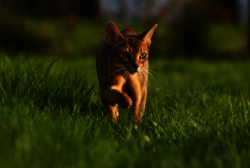
Abyssinian cat
The Abyssinian convinces with its elegance and special coat
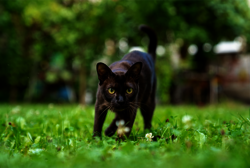
The Burmese cat
The Burmese is a very lively and playful cat breed

British Shorthair
The breed originated from the domestic cat. It is calm &…
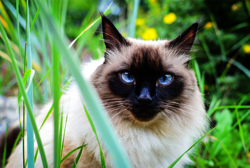
Balinese
The long-haired variant of the Siamese cat
